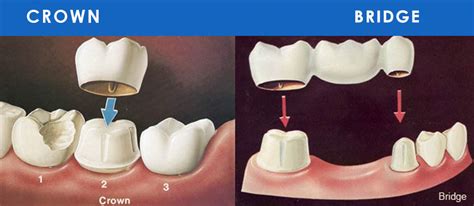Crowns And Bridges For Teeth

When it comes to restoring damaged or missing teeth, crowns and bridges are two of the most common and effective dental solutions. These dental prosthetics can not only improve the appearance of your smile but also restore the functionality of your teeth, allowing you to eat, speak, and live with confidence. In this article, we will delve into the world of crowns and bridges for teeth, exploring what they are, how they work, and what benefits they can offer.
What are Crowns?
A dental crown is a cap or covering that is placed over a tooth to restore its shape, size, and strength. Crowns are typically made of ceramic, porcelain, or composite materials and are designed to match the color and texture of your natural teeth. They can be used to repair a variety of dental issues, including:
- Cracked or broken teeth
- Severely decayed teeth
- Discolored or stained teeth
- Teeth that have undergone root canal therapy
The process of getting a crown typically involves two visits to the dentist. During the first visit, the dentist will prepare the tooth by removing any decay or damaged areas and shaping it to fit the crown. An impression of the tooth is then taken and sent to a dental laboratory where the crown is fabricated. In the meantime, a temporary crown is placed over the tooth to protect it. At the second visit, the temporary crown is removed, and the permanent crown is cemented into place.
What are Bridges?
A dental bridge is a prosthetic device that is used to replace one or more missing teeth. Bridges consist of two or more crowns that are attached to a false tooth, known as a pontic, which is designed to fill the gap left by the missing tooth. The crowns on either side of the pontic are attached to the natural teeth, holding the bridge in place. Bridges can be made of the same materials as crowns and are designed to match the color and texture of your natural teeth.
There are several types of bridges, including:
- Traditional bridges: These are the most common type of bridge and involve crowns on either side of the pontic.
- Cantilever bridges: These involve a crown on only one side of the pontic and are typically used when there is only one natural tooth available to support the bridge.
- Maryland bridges: These involve a metal framework that is attached to the back of the natural teeth, holding the pontic in place.
Benefits of Crowns and Bridges
Crowns and bridges offer a range of benefits, including:
- Improved appearance: Crowns and bridges can restore the natural beauty of your smile, boosting your confidence and self-esteem.
- Restored functionality: Crowns and bridges can restore the ability to eat, speak, and chew comfortably, allowing you to enjoy your favorite foods and activities.
- Protection: Crowns can protect damaged or decayed teeth from further damage, while bridges can prevent the surrounding teeth from shifting or becoming misaligned.
- Durability: With proper care, crowns and bridges can last for many years, providing a long-term solution to dental issues.
The Process of Getting Crowns and Bridges
The process of getting crowns and bridges typically involves several steps, including:
- Consultation: The first step is to consult with a dentist to discuss your options and determine the best course of treatment.
- Preparation: The dentist will prepare the teeth by removing any decay or damaged areas and shaping them to fit the crown or bridge.
- Impression: An impression of the teeth is taken and sent to a dental laboratory where the crown or bridge is fabricated.
- Temporary crown or bridge: A temporary crown or bridge is placed over the teeth to protect them while the permanent one is being made.
- Cementation: The permanent crown or bridge is cemented into place, and any necessary adjustments are made.
Step-by-Step Guide to Getting Crowns and Bridges
- Consult with a dentist to discuss your options
- Prepare the teeth by removing any decay or damaged areas
- Take an impression of the teeth and send it to a dental laboratory
- Place a temporary crown or bridge over the teeth
- Cement the permanent crown or bridge into place
Conclusion
Crowns and bridges are two of the most effective dental solutions for restoring damaged or missing teeth. With their ability to improve appearance, restore functionality, and protect teeth from further damage, it’s no wonder why they remain a popular choice among dental patients. By understanding the benefits and process of getting crowns and bridges, you can make informed decisions about your dental care and enjoy a healthier, more beautiful smile for years to come.
What is the difference between a crown and a bridge?
+A crown is a cap or covering that is placed over a tooth to restore its shape, size, and strength, while a bridge is a prosthetic device that is used to replace one or more missing teeth.
How long do crowns and bridges last?
+With proper care, crowns and bridges can last for many years, typically ranging from 5 to 15 years or more.
Are crowns and bridges painful?
+While some discomfort may be experienced during the procedure, crowns and bridges are typically not painful and can be completed under local anesthesia.
